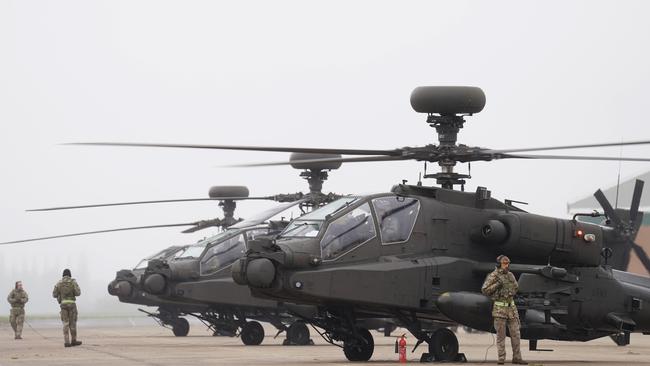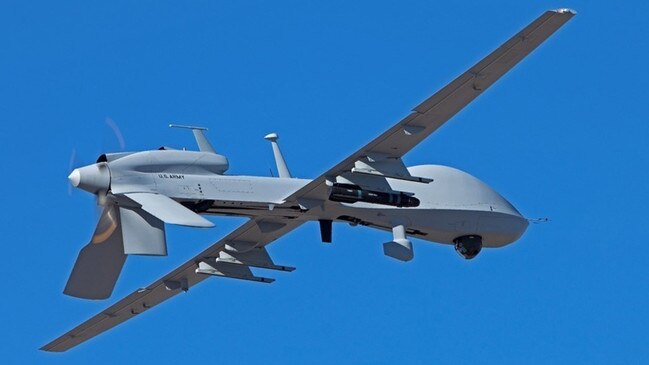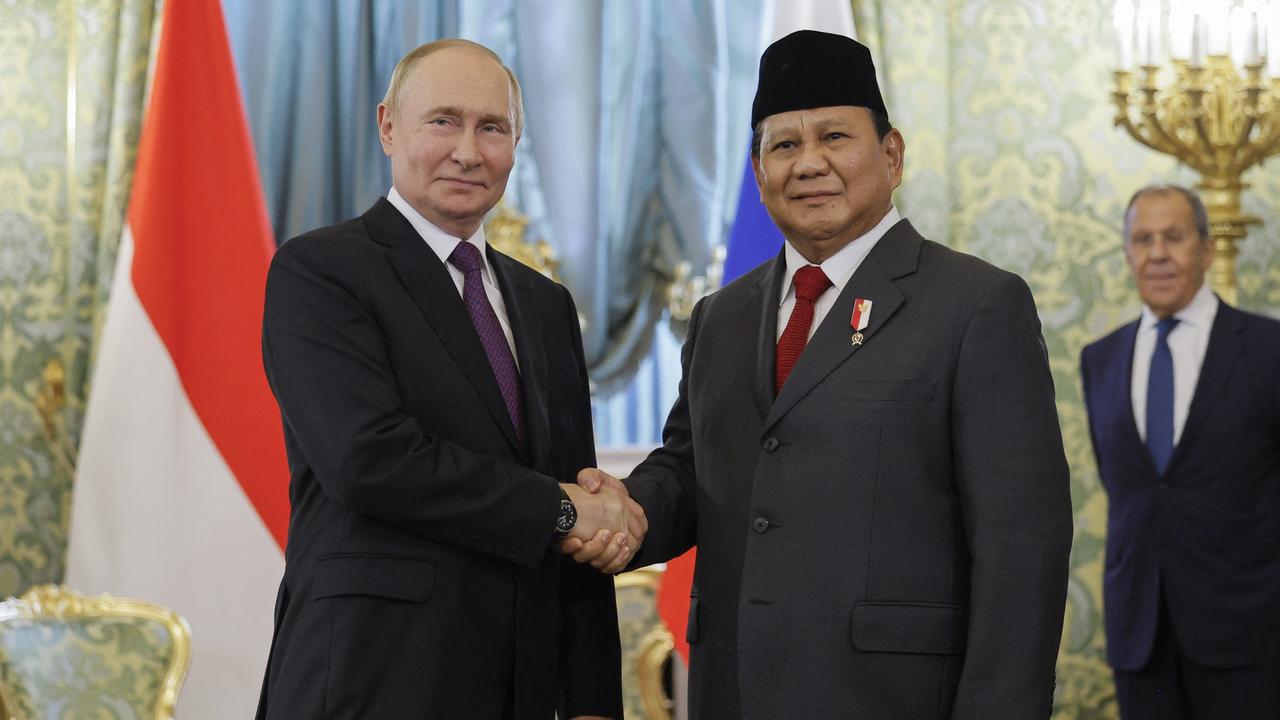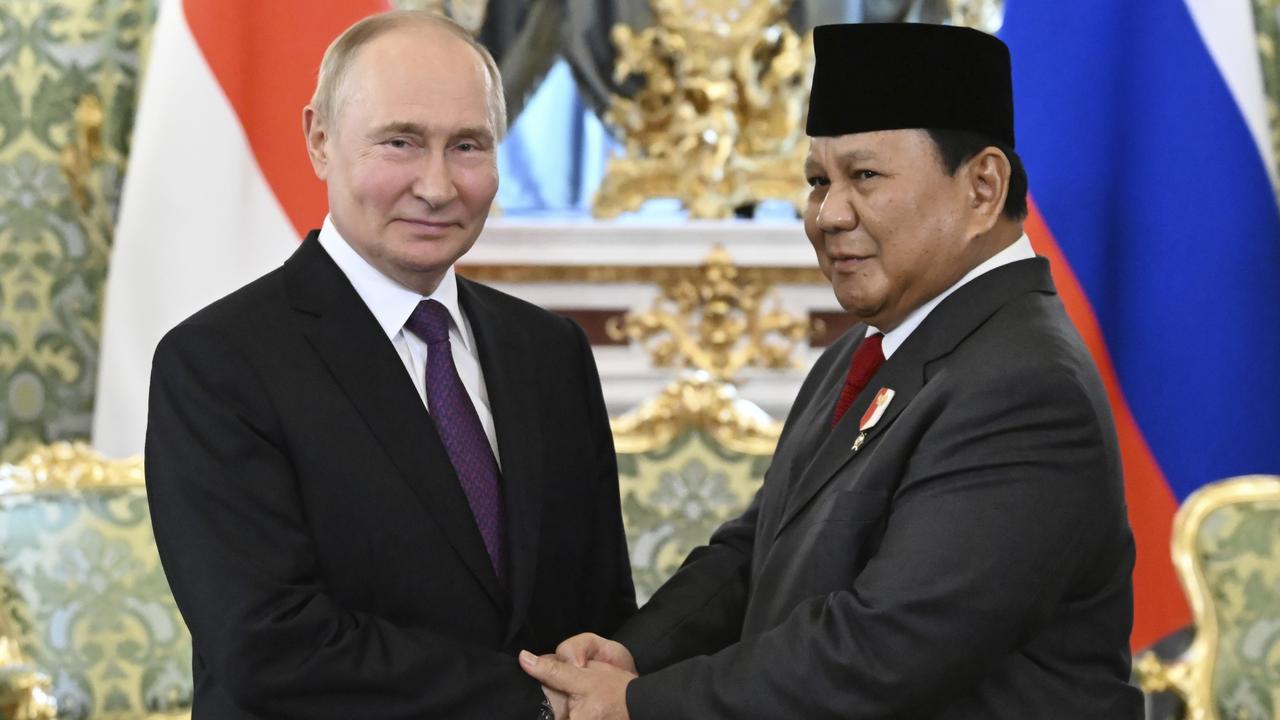New Apache helicopters may be tied with drones
The Albanese government has signalled the army’s planned $5bn fleet of Apache attack helicopters will be paired with drones, as it pushes back against critics who argue the aircraft could soon become obsolete.

The Albanese government has signalled the army’s planned $5bn fleet of Apache attack helicopters will be teamed with armed drones to keep crews safe and extend the aircraft’s lethality, as it pushes back against critics who argue the aircraft could soon become obsolete.
The first of 29 new Boeing Apache helicopters will be delivered this year, amid evidence from the war in Ukraine that manned helicopters are increasingly vulnerable to attack by missiles and drones.
The government is forging ahead with the purchase as Japan moves to retire the platform and the US axes its next-generation attack-helicopter program.
The US Army continues to operate the Apache but has begun partnering them with armed Gray Eagle drones, giving the helicopter’s crew access to their weapons and sensors from up to 110km away.
Defence has not confirmed if it will buy the General Atomics Gray Eagle, telling The Australian the AH-64E Apache is a superior capability in its own right. But it flagged the helicopters would operate with drones in the future as part of a $4.3bn-$5.3bn investment in uncrewed systems over the next 10 years.
“The AH-64E Apache carries a range of sensors, munitions and weapons well beyond that of an uncrewed platform, and provides the critical step change in capability to enable the teaming of crewed-uncrewed aerial systems,” a Defence spokesman said.
He said the Australian Defence Force’s future drone investments would “work together and complement crewed systems on missions that will support a strategy of denial, hold potential adversaries at risk and increase the potency of our capabilities”.
“Crewed attack helicopters will remain an essential part of the Australian Defence Force’s capability mix to support land force operations across a range of operational scenarios,” the spokesman said.
The Apache, armed with a 30mm automatic cannon, wing-mounted rockets and hellfire missiles, is regarded as the world’s best attack helicopter. It is bristling with advanced systems, including electro-optical sensors and radar technologies, to seek out targets and counter enemy attacks.
But some experts have urged the government to abandon the Apache purchase, given the scores of helicopters destroyed in Ukraine by surface-to-air missiles including shoulder-fired systems, and even cheap quadcopter drones.

Former Defence official Marcus Hellyer said the war had shown attack helicopters were “just not survivable in the face of any kind of modern air-defence system”.
“It’s a struggle to see how they are going to survive in a fight with a peer or near-peer adversary,” Dr Hellyer said.
Rather than spending $5bn on an “exquisite” helicopter fleet, the government should go all-in on drones, he argued.
“If it’s to do reconnaissance, well, you can get lots of (unmanned aerial vehicles) to do that role; if it’s to do attack, you can do that with UAVs,” Dr Hellyer said.
He said the army’s new High Mobility Artillery Rocket System also offered the ability to attack targets at long ranges without “flying into the teeth of the enemy’s air defence network”.
But retired major general Mick Ryan, author of a new book on the war in Ukraine, said the key lesson from the conflict was on the need to use capabilities differently from those used in the past.
“(Attack helicopters) won’t be out there on the front line, they’ll be sitting back because they have very good electromagnetic protection and communications, and they’ll control fleets of drones,” he said.
“We’ve got to go back and really look at tactics and techniques for their use – not just partnering with uncrewed systems, but protecting them against uncrewed systems as well.”
Fellow retired major general Fergus McLachlan said the current generation of attack helicopters, including Apache, were “very late in their life cycle”, adding: “That said, Apache is a tough, reliable, battle-proven helicopter that we know works and we can watch what happens with helicopter development and follow at the back of the field.”
He said Australia’s immediate region was unlike Ukraine, with its profusion of air-defence systems. But he said the helicopter needed to be teamed with unmanned aircraft to make it effective.
“The US Army future war-fighting concept features Apache but recognises it must be partnered with drones … to extend its range and allow it to fire its weapons from behind terrain,” he said.
The Coalition announced the Apache procurement in 2021 to replace the army’s retiring Airbus Tiger helicopters, amid frustrations with the high running costs of the European aircraft.
The following year, Japan announced it would retire its “obsolete” Apache and Cobra helicopters and replace them with drones. The US followed last February, cancelling its Future Attack Reconnaissance Aircraft helicopter program, which was aimed at finding an Apache replacement.
US Army chief-of-staff Randy George said at the time: “We are learning from the battlefield, especially Ukraine, that aerial reconnaissance has fundamentally changed. Sensors and weapons mounted on a variety of unmanned systems and in space are more ubiquitous, further reaching and more inexpensive than ever before.”
Poland bucked the trend in 2024 year, announcing it would acquire 96 Apache helicopters.
Israel has been a big user of the Apache during its wars with Hamas and Hezbollah terrorist forces, using the helicopters’ 30mm cannons to shoot down enemy drones.
The army’s Apache helicopter fleet will be based in Townsville creating more than 150 jobs, with a further 50 jobs in Brisbane and 30 jobs in Oakey, Queensland.
The government announced its first armed-drone procurement last year, ordering an undisclosed number of Switchblade 300 loitering munitions.




To join the conversation, please log in. Don't have an account? Register
Join the conversation, you are commenting as Logout